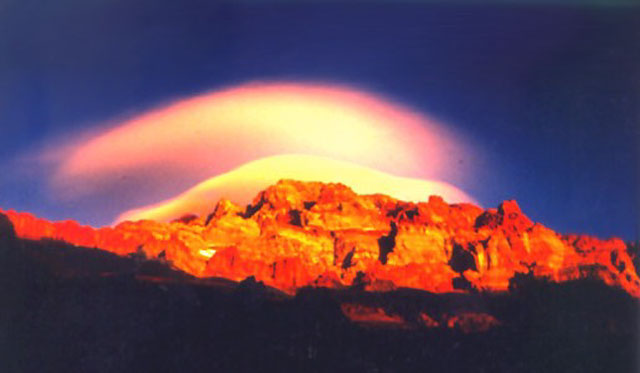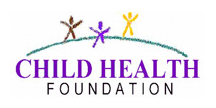Daniel Sack, M.D. – Aconcagua Climb, led by Andes Mountain Guides
January 5th – 20th, 2011
Please indicate Dan Climbs for Child Health in the “Comments” box of the form. 100% of your tax-deductible donation goes to Child Health Foundation.
 Dan (age 51) was born in Portland, Oregon, spent several years growing up in Calcutta, India, and now lives in Hunt Valley, Maryland with his wife Kathy and three kids. Dan is an Anesthesiologist practicing in Frederick, Md. He loves the outdoors and as a teenager spent a lot of time hiking the Appalachian trail, whitewater rafting in Western Maryland and spelunking in the tri-state area.
Dan (age 51) was born in Portland, Oregon, spent several years growing up in Calcutta, India, and now lives in Hunt Valley, Maryland with his wife Kathy and three kids. Dan is an Anesthesiologist practicing in Frederick, Md. He loves the outdoors and as a teenager spent a lot of time hiking the Appalachian trail, whitewater rafting in Western Maryland and spelunking in the tri-state area.
Several years ago he and long time friend David Pohl summited Mt. Rainier in Washington state.
During the last 10 years Dan has completed the Baltimore and New York marathons and participated in a number of charity events including the 2009 and 2010 Multiple Sclerosis 150 mile bike rides.
Looking for another challenge, Dan wanted to combine his next climb with fundraising efforts for Child Health Foundation. At almost 23,000 feet, Argentina’s Aconcagua seemed to be the perfect combination of height, weather and terrain for the next big challenge.
Dan Sack reached the 23,000 ft. peak of Mt. Aconcagua (Argentina) on January 20th, 2011 and has returned safely. He raised over $9,000 for Child Health Foundation. Perhaps you’d like to add to that and celebrate this accomplishment.
Below are the pictures and the story of his climb in his words.
After a long flight, I arrived in Mendoza and was greeted by the Mountain Guides. The next few days were filled with preparation and on day 4, other members of the group and I entered the park and headed off for a 3-mile hike to out first camp, Confluencia (11,010 ft). After setting up camp, we were off on our first acclimatization hike. Four hours later, we arrived at Plaza Francia lookout point (13,400 ft), and were able to get our first glimpse of this awesome mountain with impressive views of the south face.
After several days of acclimatizing, and another day to rest, it was now day 14, and we were ready for our next push to higher camp. We reached Berlin Camp (19,600 ft.) after about 4 to 5 hours and set up camp knowing that we might have to spend an extra day here due to strong winds. The forecast was predicting strong winds over the next day and half reaching over 100 mph at the summit. Obviously a summit attempt in those conditions would be futile. The forecast turned out to be accurate as we learned that on the first night trying to keep our tents from collapsing under 60 to 70 mph gusts. The next morning we discovered several tents around us had been flattened and the climbers had to squeeze in with their colleagues. The winds subsided and on Day 16 we began our push for the summit.
With an early morning wake up call (around 3am), we began preparing for our climb in darkness and frigid cold temperatures. Under the dim lights of our headlamps we pushed on to Independencia shelter at 21,476. Later, we pushed on across the “big traverse” and up the “canaleta” groove. After climbing that particularly steep and strenuous section we traversed “Guanaco’s” ridge which took us to the highest point in the western hemisphere, the summit of Aconcagua at 22,841 ft.
We celebrated and stayed for 45 min. to an hour, took pictures and measured our oxygen levels (58%) before heading back down; about a 15 hr. day round trip.
A great and memorable adventure. (never to be repeated). At least not on this mountain. 🙂
About Child Health Foundation
Child Health Foundation was established in 1985 as a non-profit, public charity [501(c)3] to prevent and treat life-threatening communicable diseases of infants and children in the United States and abroad.
Our mission is “to save the greatest number of children’s lives at the lowest possible cost.” We accomplish this through our unique network of health professionals and organizations committed to improving health policies and practices. We operate as an independent agent of change, seeking and promoting more effective, easily-delivered and less-expensive methods to prevent illness and death of children, such as oral rehydration therapy to prevent dehydration, immunizations, and breastfeeding.
About Aconcagua
How high is Aconcagua?
Aconcagua’s name has roots in the Quechua language and when translated means “The Sentinel of Stone.” At 22,841 feet (6,962m) Aconcagua in Argentina is the highest peak in the world outside of the Himalayas.
The mountain stands on the border of Chile and Argentina and has a very steep and massive face on its south side and a gentle slope on the north, with a huge glacier – the Polish glacier – flowing to the east and a series of aretes and couloirs to the west. It is one of the world’s “Seven Summits”.

Final push to North Summit of Aconcagua
How long will the climb take?
Known as the highest trek in the world, it will take 19 days and require 14,000 feet of elevation gain to reach the summit. The climb is broken down into two phases. The first phase is a 3-day trek from 8,600 feet (2,620m) to Plaza de Mulas base camp at 14,300 ft (4358m) . The second phase is the trek to the high camps and the summit at 22,841 ft (6961m).

Route from base camp to summit (Aconcagua)
How cold will it be?
Mountains are known for unpredictable weather and Aconcagua is no exception. It is known for its blasting winds and cold temperatures. Days of clear sunny skies are normal on Aconcagua, but the mountain does receive storms during the summer months due to its proximity to the Pacific Ocean, and the moist, humid winds blowing west from there. As this air rises over the slopes of the Andes, its speed increases and it condenses to form lenticular clouds on the summit, also known as viento blanco, or white wind. Given the potential for challenging weather conditions getting to the summit is not guaranteed, even for well-prepared climbers.

The Viento Blanco or white wind

Penitentes (or spikes of ice) reaching for the sun
What are the effects of altitude?
One of the biggest issues at high altitude is acclimatization. Above 10,000 feet (3,048m) there is a noticeable decrease in air pressure. It feels like you are breathing through a straw, making even the easiest tasks a challenge. Everything must be done in slow motion. Travel to extreme altitudes can sometimes lead to medical problems, from the mild symptoms of acute mountain sickness to more serious conditions such as high altitude pulmonary edema (HAPE) and high altitude cerebral edema (HACE). The higher the altitude, the higher the risk. While supplemental oxygen and other medical remedies can help significantly, moving to a lower altitude is sometimes necessary to alleviate symptoms.

View from the summit of Aconcagua
If your company or organization would like to become a sponsor of our climb please contact Dan Sack at (443) 834-6681 or email sackmd@msn.com
Your dollars can make a big difference. All donations are tax-deductible. Please send your gift through our secure on-line payment form >
Please indicate Dan Climbs for Child Health in the “Comments” box of the Donation form. 100% of your Donation goes to Child Health Foundation.
